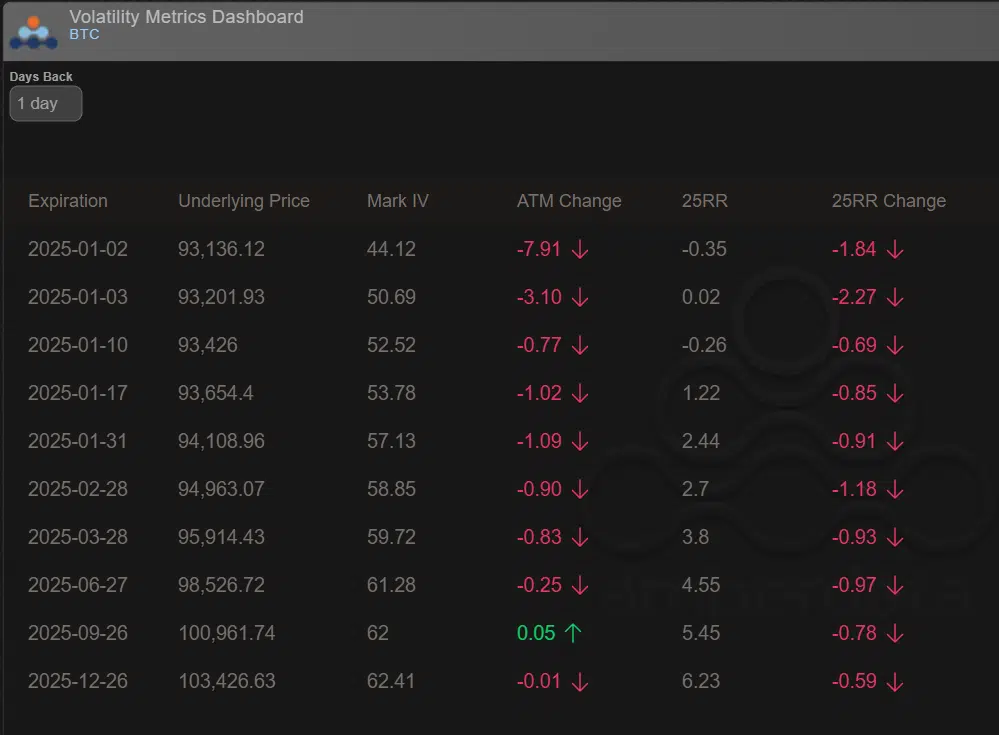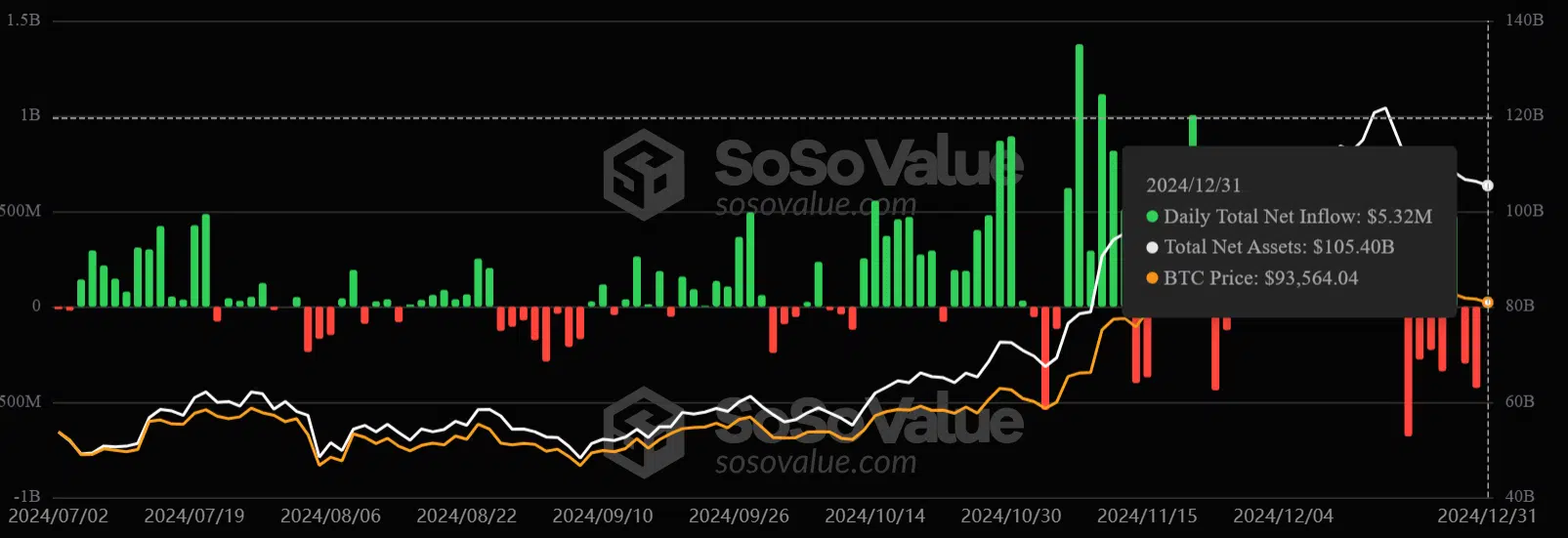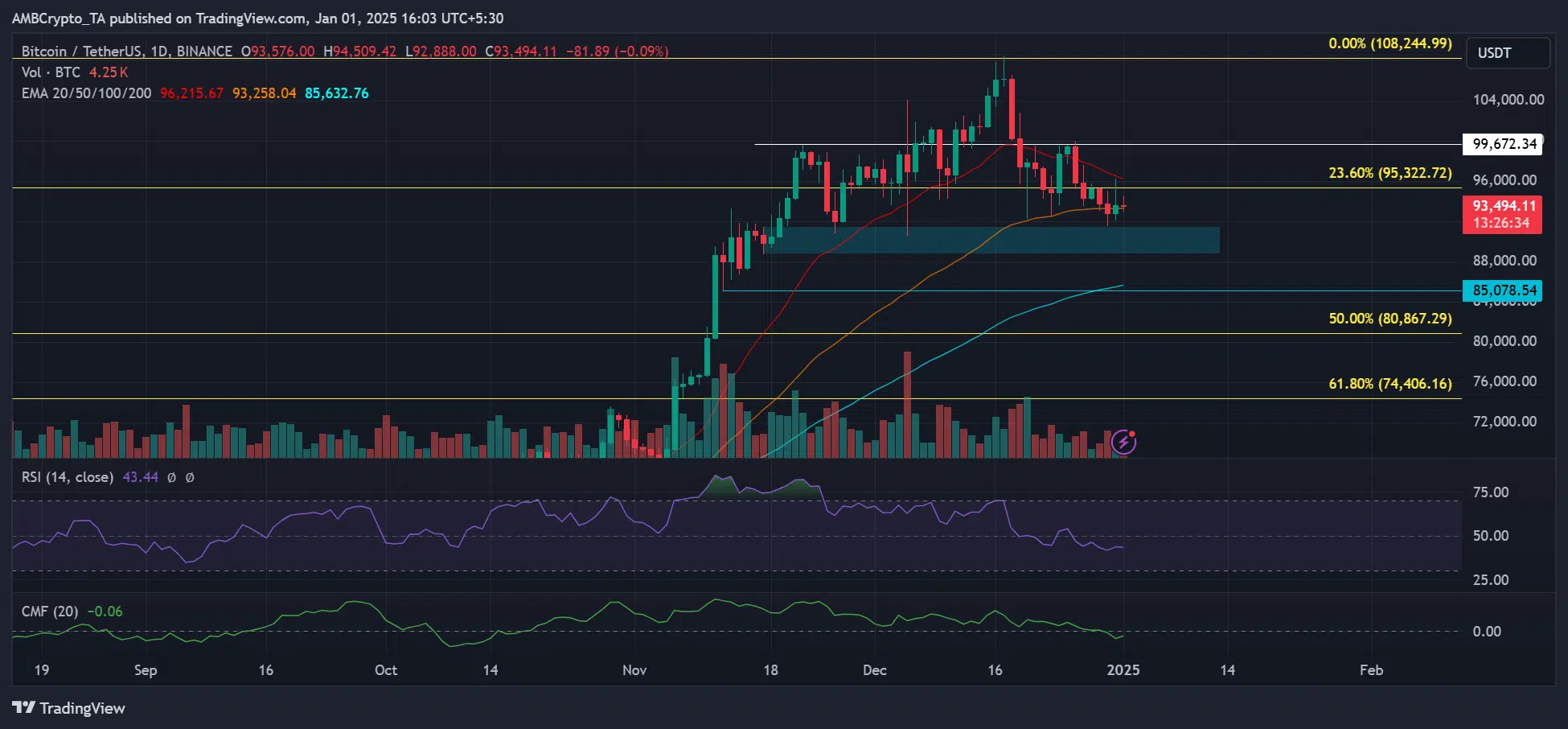New year’s Bitcoin surge falters at $96K – What’s next for BTC in January?

- BTC’s end-year rebound was capped at $96K.
- What’s next for the BTC in January ahead of Trump’s inauguration.
Bitcoin’s [BTC] rebound to $96K was quickly cut short on New Year’s Eve, amid mild market caution and a potential recovery from mid-January.
In its recent Telegram update, trading firm QCP Capital said that recent BTC rallies have been capped due to thin liquidity.
The firm added that BTC ETFs saw $19B outflows since December 19th which further fizzled the cryptocurrency into year-end.
The ETF products saw only $5M in inflows on 31st December, underscoring muted demand. However, the trading desk projected a potential rebound in January as institutions re-adjust their capital allocation.
A bumpy start for BTC
Interestingly, the options market was pricing a neutral to mild bearish scenario for BTC in the first half of January. But the second half of the month appeared positive for the crypto.
This was illustrated by the 25-delta risk reversal (25RR), which tracks the implied volatility (future price swings) between puts (bearish bets) and calls (bullish bets).
For January expiries on the 2nd, 3rd, and 10th, the 25RR was neutral or negative (more put options than calls), suggesting neutral to a bearish bias.

Source: Amberdata
However, the 25RR for expiries in the second half of the month (17/31) were positive. This suggested more demand for calls than puts later in January, underscoring a bullish sentiment.
The positive outlook later in January coincided with the post-Trump inauguration, perhaps indicating that the market might be slightly bullish after the event.
If the options markets are to be believed, then the short-term local bottom for BTC might be in near Trump’s inauguration (the 20th of January).
On the price charts, the largest digital asset was still within the $90K-$100K price range. But the daily RSI toiled below the average level, underscoring the recent muted demand for the asset.
Most analysts expect BTC to defend the range lows ($90K) or $85K. However, a drop below $85K could be catastrophic because it would trigger a panic sell-off by short-term holders (STH).







![Arbitrum [ARB] - 50% hike after ETH's rally, but can it hold on for token unlock?](https://engamb.b-cdn.net/wp-content/uploads/2025/08/Ritika8-400x240.webp)
